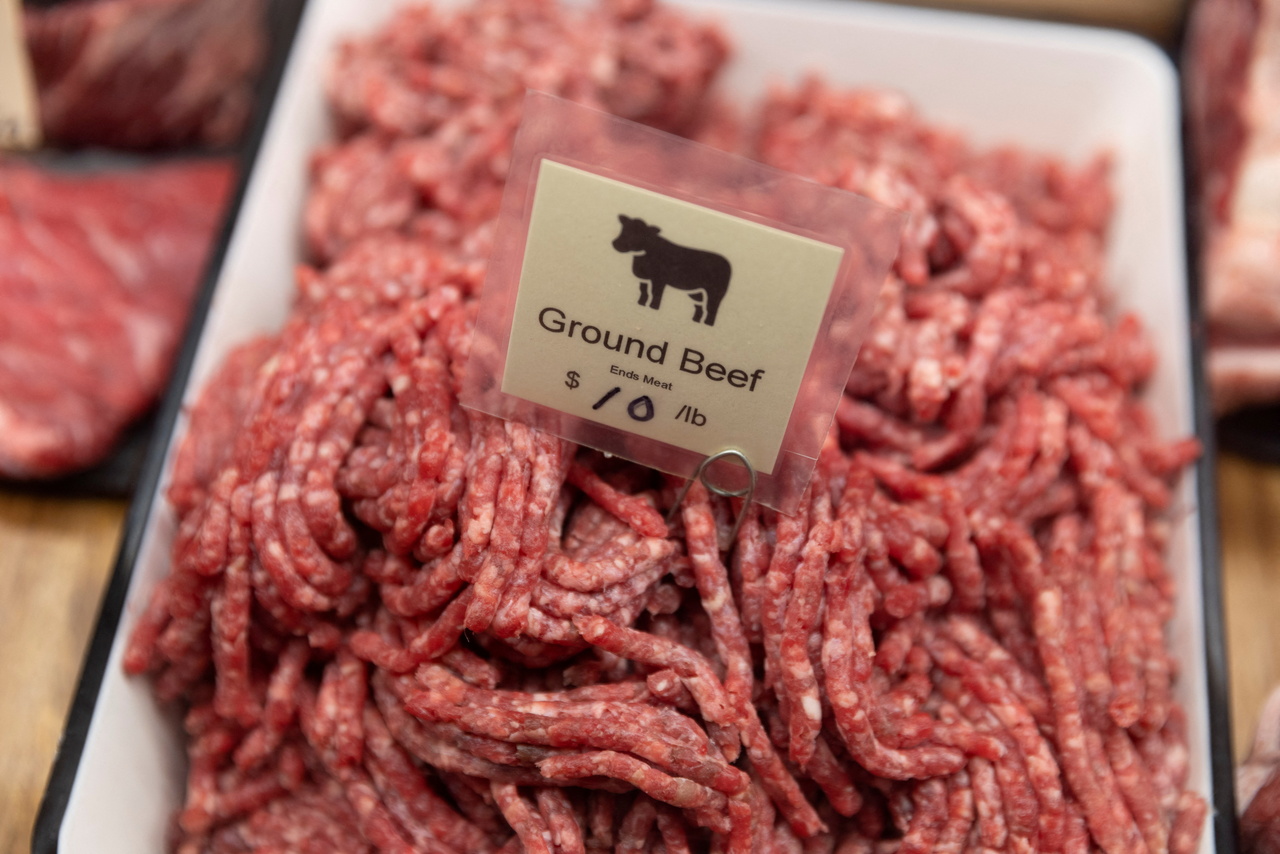That bacon, chicken and beef won't get cheaper any time soon
Sign up now: Get ST's newsletters delivered to your inbox

Meat prices - already at record highs - won't fade fast.
PHOTO: REUTERS
Follow topic:
LONDON (BLOOMBERG) - Producing the world's meat has rarely been this expensive.
Farmers across the world - with more than 40 billion pigs, cows, buffalo, sheep, goats and various fowls - are contending with near-record prices for livestock feed as supplies of grains and soya shrink. Bills for everything from the electricity that keeps their barns well-lit and warm to truckers who haul their animals to abattoirs have also soared.
Crop and energy costs surging in the wake of Russia's war in Ukraine have compounded their woes even as they struggle with everything from droughts curbing grazing lands to bird-flu outbreaks from North America to Europe that wiped out millions of poultry.
Hit from all sides, many farmers are selling livestock or breeding fewer, showing output will be capped in the longer term. The number of beef cows being slaughtered in the United States is the highest since records started in 1986, and those cows not giving birth to calves will result in smaller herds. That means meat prices - already at record highs - will not fade fast, further weighing on household budgets that are straining under higher costs for other staples and necessities.
The United Nations' Food and Agriculture Organisation (FAO) meat price index has risen 10 per cent since the beginning of the year, hitting a record in April. In the US, prices of bacon, chicken breasts and ground beef have never been higher.
The global production of chicken, pork and beef will slow to a 1.4 per cent advance in 2022, versus 5.4 per cent last year, the US government forecasts.
"A lot of the pressures that we are facing, the individual pressures themselves are not really new or unusual," said Mr Justin Sherrard, global animal protein strategist at Rabobank. "It is the combination of issue upon issue."
Russia's invasion has slowed Ukraine grain exports to a trickle, curbing corn supplies that major hog producers like Spain and China rely on. Feed makes up the bulk of the cost to raise livestock, and even for countries that produce their own, crop prices have scaled dizzying heights. Chicago corn futures have risen 31 per cent this year; Paris corn futures are up 55 per cent and British feed-wheat futures climbed more than 50 per cent.
"I have never seen anything like this," said Mr Jamie Wyllie, a Scottish pig farmer whose farm typically markets more than 70,000 pigs a year. He is cutting back his breeding herds to stem the blow. Feed now accounts for 70 per cent of his pig production costs, up from the usual 60 per cent.
Wholesale pork prices in Britain have risen, but do not cover production costs, putting farmers on track for an "unprecedented" sixth straight quarter of losses, according to Ms Zoe Davies, chief executive of Britain's National Pig Association. Pig farmers in Britain were already reeling under labour shortages at meat plants that left more than 100,000 pigs backlogged for slaughter earlier this year. Farmers culled animals as farm space ran out. Just as the situation was improving, Russia's war erupted.
Pork output in the European Union, the world's top exporter, will fall 3 per cent this year, the first drop since 2019, the government estimates. Rising prices are not offsetting costs, likely prompting farmers to slaughter animals earlier than usual.
Late last year, the pig herd in Germany shrank to its smallest since 1996, and analyst Tim Koch at market consultancy AMI expects the declines to continue this year. Outbreaks of African swine fever - mainly in wild hogs - brought export restrictions on German pork and depressed prices. After the surge in feed and energy costs, Mr Koch said, most pig farmers will need prices at about €2 to €2.40 (S$3 to S$3.50) per kg to be profitable, up from €1.60 to €1.70 in normal times. Prices are just under €2.
In China, home to half the world's hogs, record feed expenses and a prolonged slump in pork prices have spurred staggering losses at top hog breeders - after just recovering from a lethal swine fever outbreak, with sow numbers falling for eight straight months.
Some farms can weather the expenses, but disease and droughts are still taking a toll. An avian influenza sweeping across the Northern Hemisphere killed nearly 38 million birds - mostly turkeys and egg-laying hens - in the US, one of the worst-ever outbreaks. France's south-western foie gras region also faced a mass cull for a second year and Polish chicken farms suffered cases.
Bad weather is an added hurdle. In southern Alberta, drought has scorched pasture grasses and cropland in the past year. With dry weather moving into its third year in some areas, farmers and ranchers have already used any stored feed and drawn on cash reserves.
Western Canada's grain output shrank by 40 per cent, driving up the cost of feed and forcing producers to import supplies from the US. The squeeze cost an extra C$400 (S$430) in feed per animal over winter, said Mr Jacob Bueckert, chair of the Alberta Cattle Feeders.
In Argentina, wildfires killed 700,000 heads of cattle in February and March, while pastures across the Pampas farm belt have suffered drought that is reducing calving and has put the herd on course for a six-year low.
Tyson Foods, the biggest US meat company, has warned of shrinking supplies.
Heavy "cattle liquidation" in the year to date will impact supplies for two to three years, Mr Shane Miller, its president of fresh meats, said on an investor call.
"Producers cannot bear the entire cost," said FAO economist Upali Galketi Aratchilage. "It is very likely we see consumers paying more, at least for the foreseeable future."

